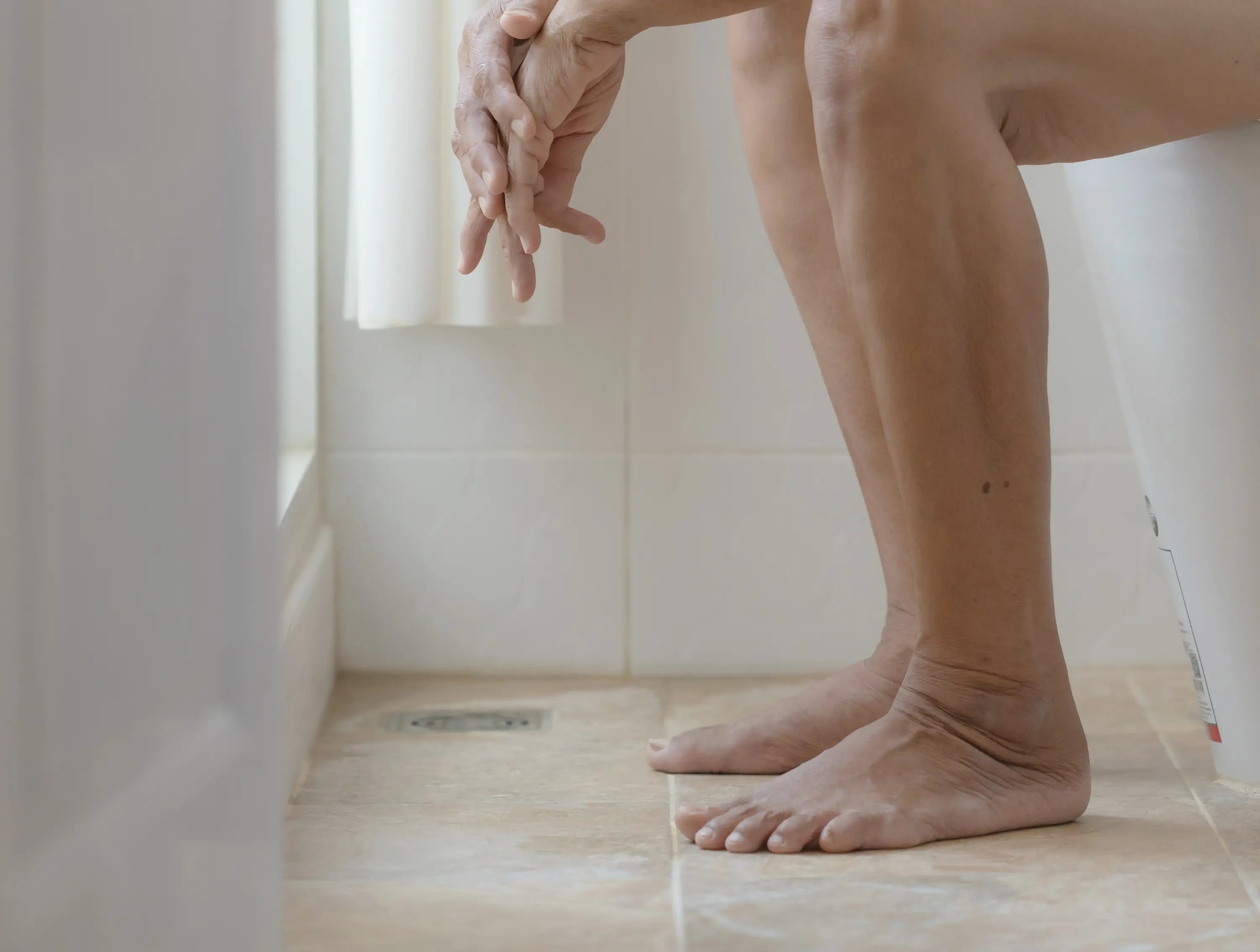Double voiding
Double voiding is probably the most common bladder emptying technique and often works a treat for people who feel like their bladder isn’t fully empty after a first trip to the bathroom. So, how does double voiding work? It’s quite easy, just follow the steps below:
- Make sure you’re sat on the toilet comfortably and lean slightly forward
- Place your hands on your knees or thighs to optimise your position for emptying your bladder
- Pee as you would usually and really focus on emptying your bladder
- Then just stay on the loo for another 20 to 30 seconds
- Lean slightly further forward and try to empty your bladder again
It might not always work on the first try but don’t give up immediately. If you can’t empty your bladder a second time, try things like rocking from side to side or running your hands under warm water. Please only rock from side to side if you can position yourself on the toilet safely! If you’re not able to empty your bladder again, even with rocking and warm water, try to get up and walk around for about 10 seconds and then return to the loo. This often does the trick! Just always make sure you’re not straining when you’re trying to pee as this can negatively impact your pelvic floor muscles.
Additional techniques
- Crede maneuver: Sit down on the toilet and lean slightly forward. Then, before peeing, place both hands above your pubic bone and press slightly inward toward your stomach. This should get the urine flow going! Continue to push toward the bladder as you are peeing as this can help you to increase the amount of urine you expel from your bladder.
- Running water: This is a really old trick that one or the other might have used on their children at some point. But it’s not just an old wives’ tale! Listening to running water actually helps to make your bladder contract which will help you to pee. Just make sure that you don’t overuse this technique as your brain gets used to it super quickly which will make it more difficult for you to pee without any water running.
- Bladder percussion: Try tapping on your bladder with slight pressure to cause the contractions needed to pass urine. Continue the tapping for a few seconds after you’ve stopped peeing to make sure every last little bit of urine has left your bladder.
- Stimulation therapy: This might sound a bit strange to begin with but touching certain areas of your body can stimulate your bladder. This can include pulling on your pubic hairs or massaging your lower stomach or inner thighs.
- Vibration therapy: You can use vibration therapy to help empty your bladder. This involves holding a vibrating device on your lower abdomen. The vibrations can stimulate your bladder and make it contract, so it empties.
- Timed bathroom trips: Try to go pee at least 3-4 hours and make sure to never hold on to urine.
- Whistling: Whistling is a sustained outward breath that gently increases the pressure on your abdomen and can help you to empty your bladder.
- General relaxation techniques: This can be really helpful if you’re feeling tense and anxious about your condition.
Why is emptying your bladder so important?
Not emptying your bladder fully doesn’t just make any urinary frequency worse, it can also have further negative impacts on your body. If your bladder is never empty, there’s a chance that it becomes overstretched which will make emptying it even more difficult. If there’s urine constantly staying in your bladder, you’re also at a much higher risk of developing urinary tract infections (UTIs) as urine staying in your bladder gives bacteria the chance to multiply and cause infection. Read everything you need to know about UTIs here.

